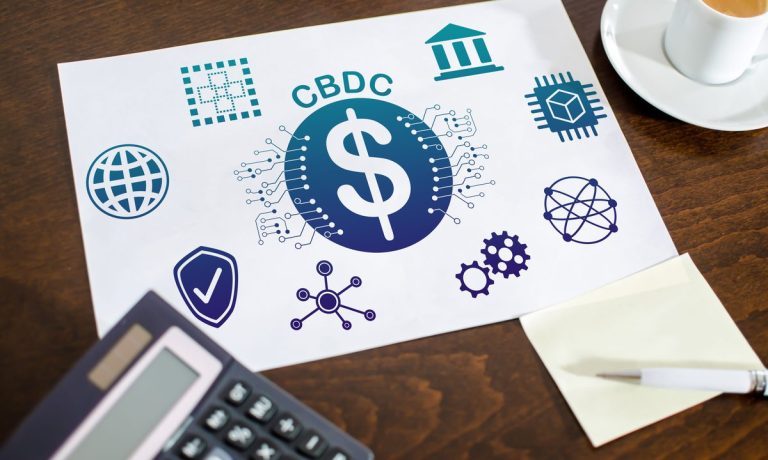
The International Monetary Fund (IMF) released a paper on February 9, “Behind the Scenes of Central Bank Digital Currency,” analyzing the experiences of six central banks in designing and issuing Central Bank Digital Currencies (CBDCs). There are a few clear messages in the paper. One of them is that each country may have a different need and a different architecture for a CBDC, and as technology evolves, it isn´t clear what is the best option — and being the first may not be an advantage.
More than one hundred countries are exploring CBDCs. When private stablecoins were announced, with Facebook´s Libra probably acting as the trigger, central banks around the world looked at CBDCs as an alternative that could help digitalize the economy and mitigate the risk of financial turmoil.
But now, as stablecoins don’t seem to pose a systemic risk yet, and the first experiences with CBDCs show the difficulties in getting it right, central banks may be choosing to continue learning and developing projects instead of launching a CBDC, even if they have the technology ready (i.e. Canada or Uruguay).
Policy Goals
The different policy goals behind the adoption of a CBDC may have an impact in the sense of urgency in developing and implementing a digital currency in a country. For instance, in the Bahamas, financial inclusion and access to payments are very important policy goals for which a CBDC could help greatly, since many commercial banks don’t serve part of the population, which is scattered across different islands.
Ensuring a resilient payment system in countries prone to natural disaster is also key for some countries, and a digital currency could facilitate payments in times of need. This policy goal was important for the Bahamas, but also important for China — the Central Bank of China argued that if any of the two dominant companies in mobile payments, Alipay or WeChat Pay, were to fail, it could have severe consequences for the Chinese payment system.
This could explain why the Bahamas quickly implemented a CBDC, but countries like Canada decided to design a contingency plan for CBDC but ultimately not to issue a coin, given other more important policy goals.
Tackling illicit use of money, monetary sovereignty or competition in the payment sector are policy goals mentioned by countries. These goals, although important, may not trigger the same sense of urgency in certain countries, either because no other currency is threatening their monetary sovereignty or because the private sector has also developed tools to detect illicit use of money and to create more efficient payment instruments.
Operating Model
The IMF identified three common models for a CBDC: the first is a unilateral CBDC, where the central bank carries out all functions in the payments system, from issuing the CBDC to distributing it and interacting with end-users. The second model entails issuance by the central bank but includes a role for private sector firms to interact with the end-user — this is an intermediated CBDC. In the third model, digital currency is issued not by the central bank, but by private firms that back the issuance by holding central bank liabilities. This model is not a CBDC, but rather a stablecoin, and is referred to as synthetic CBDC.
One important question that almost no central bank has answered yet is who is going to cover the cost of the infrastructure or whether private firms will charge a fee for using it. If private firms are expected to carry out a function in the CBDC ecosystem, as many central banks foresee, they will have to make a profit — at least in the medium term.
Similarly, though central banks are not-for-profit organizations, they will need to decide whether to seek cost-recovery for their expenditures in building the CBDC system. Central banks may also decide to subsidize the use of CBDC to increase adoption if supported by a particular policy goal. The role of the central bank is seen as providing a free or low-cost platform on which private intermediaries can operate. The question of whether and how to cover costs remains an open question, and the Bank of Canada is doing significant research in this area to figure it out.
Technology
The choice of what technology to use to build a CBDC is, according to many of the central banks analyzed, one of the most difficult ones as the technology is still developing and remains relatively untested. The decision is not only between Distributed Ledger Technology (DLT) and centralized technology. Even within DLT, the most popular option is blockchain, but there are more voices that suggest other alternatives. Technology is still evolving, and central banks are still hesitant to commit to just one option. A few of the central banks chosen by the IMF have expressed some skepticism about the suitability of DLT for central bank purposes but acknowledge that DLT can support some important functions.
The paper not only summarizes the experiences of these six central banks, but also describes the challenges they are facing — which, in many instances, don’t have a clear solution yet. Lack of resources, in terms of people and money, cyber security risks, technological uncertainty and mistrust by a certain part of the population makes this a difficult endeavor. This analysis may provide good arguments to some central banks that seem skeptical, like the Bank of England or the Federal Reserve, confirming their instincts to take additional time before launching a CBDC.
Sign up here for daily updates on the legal, policy and regulatory issues shaping the future of the connected economy.